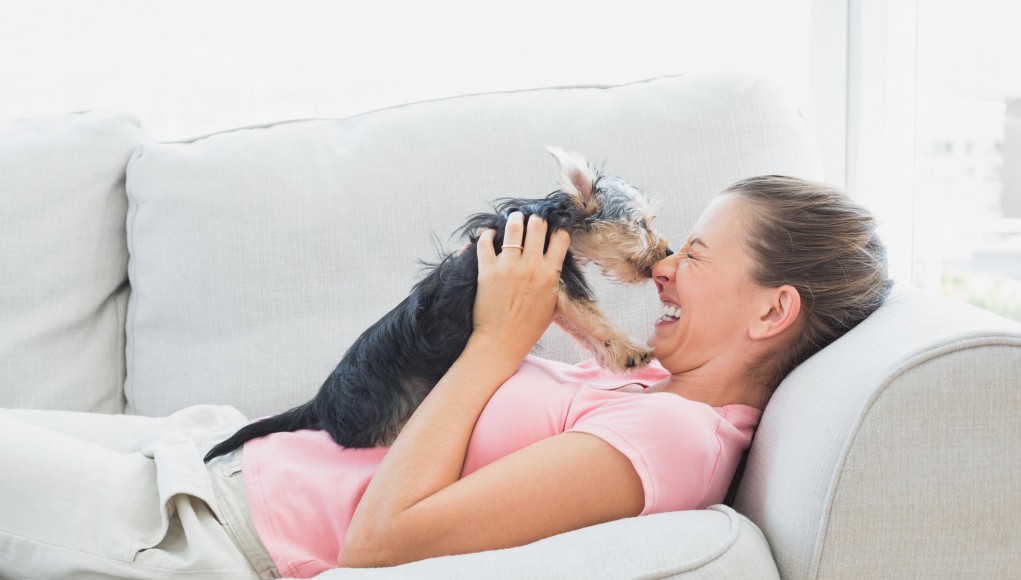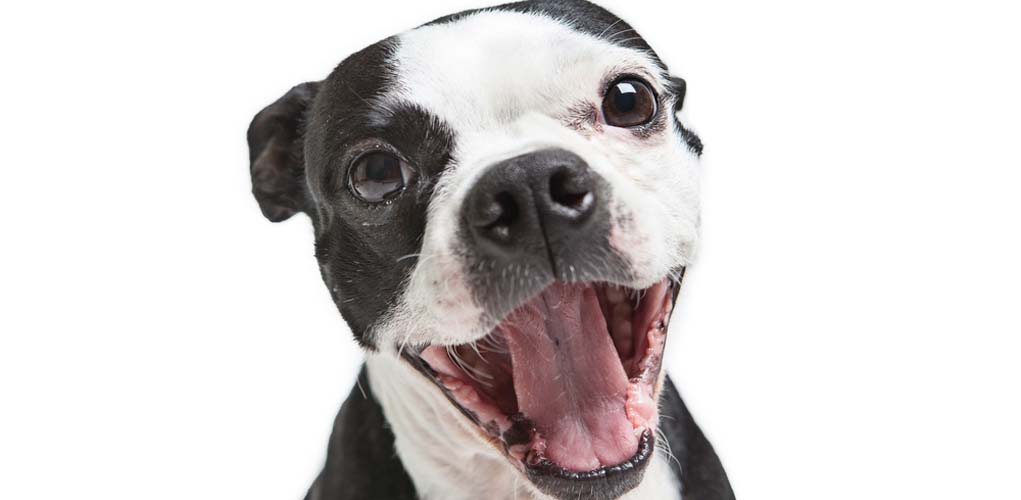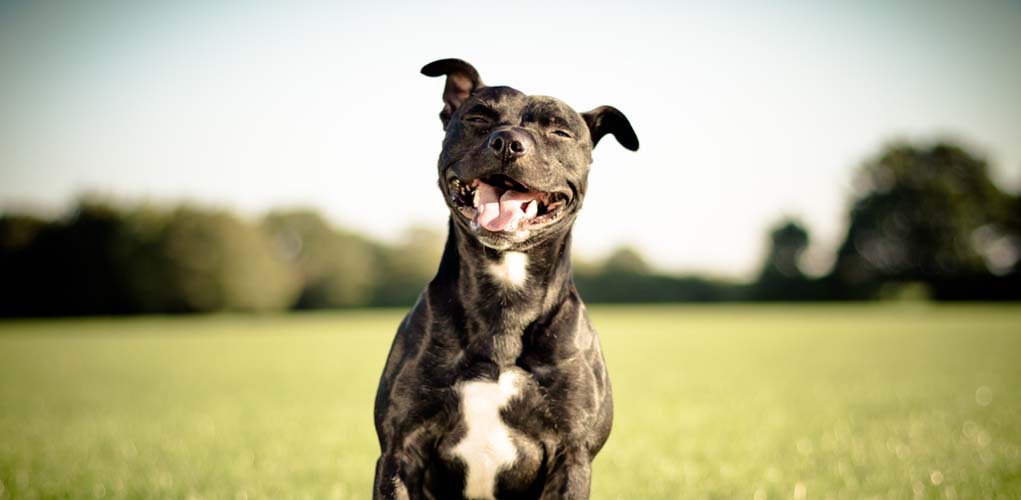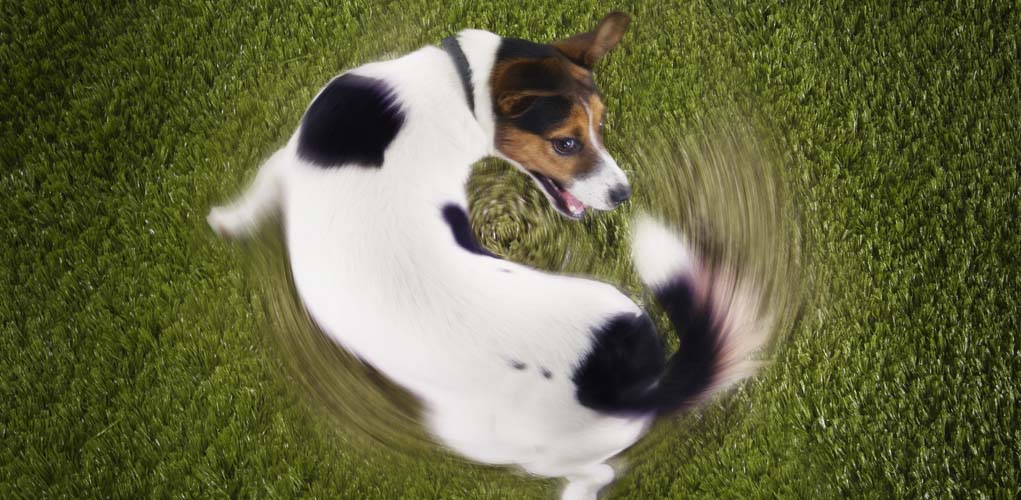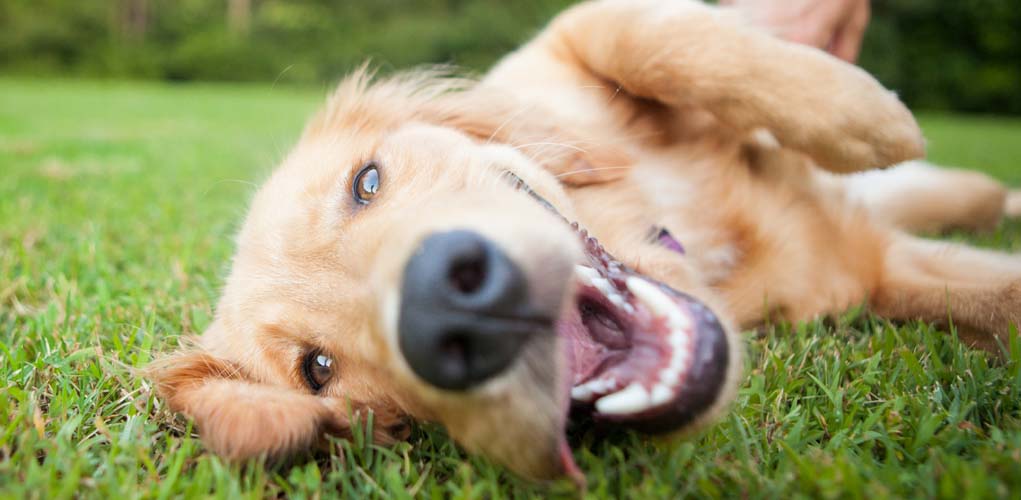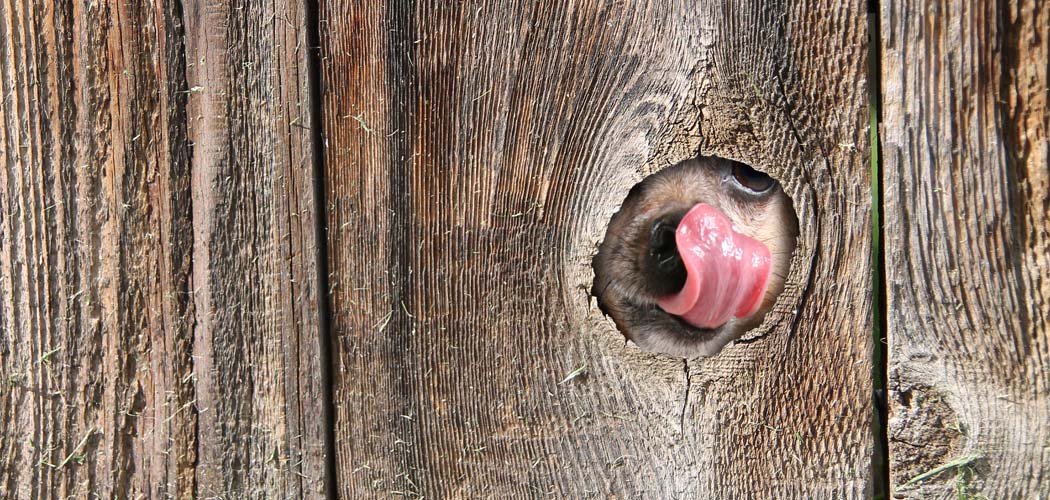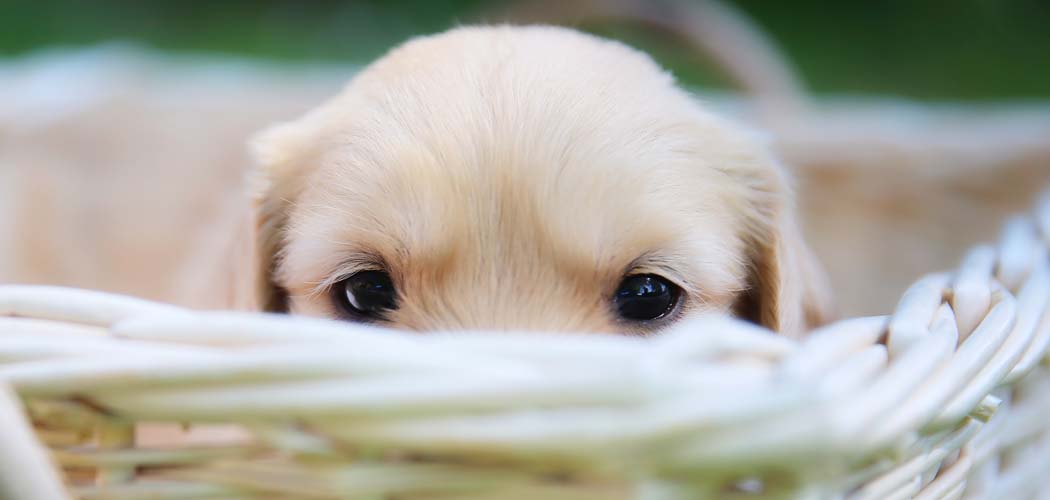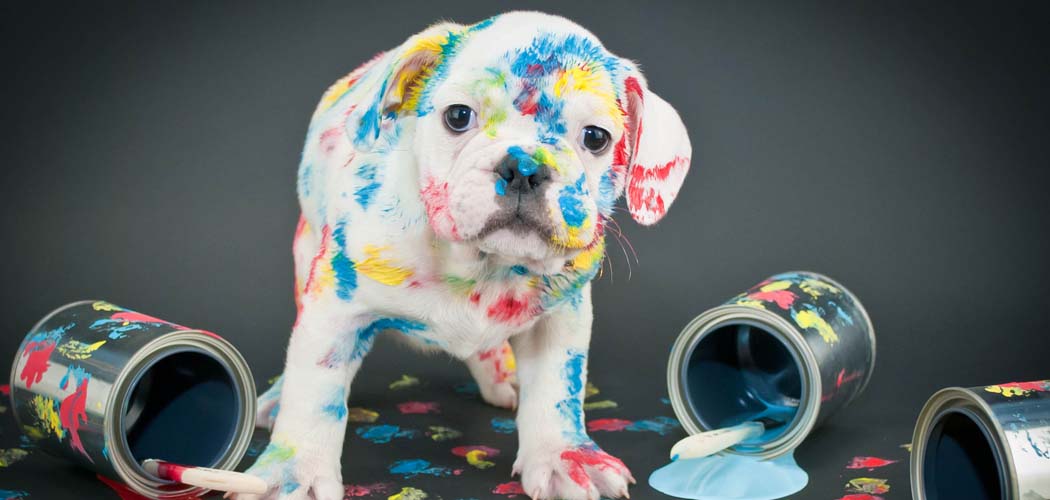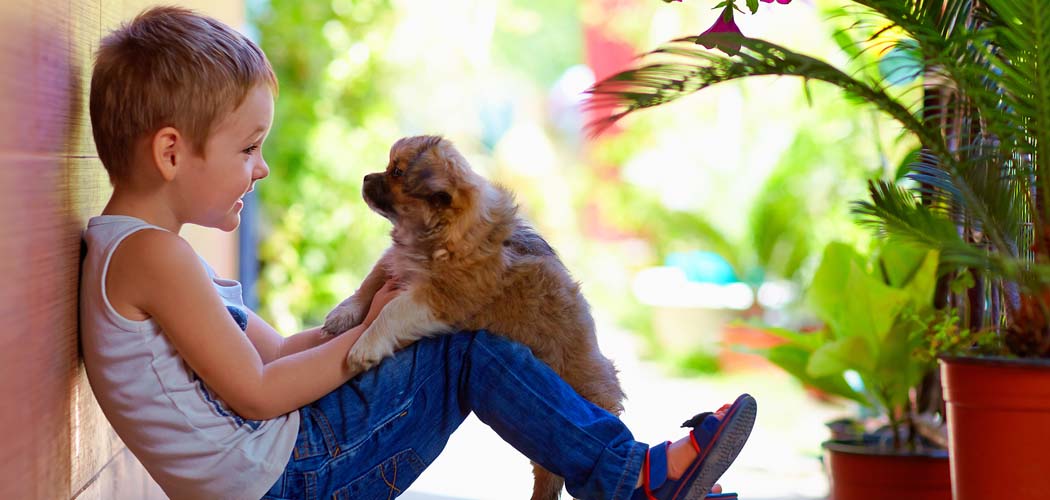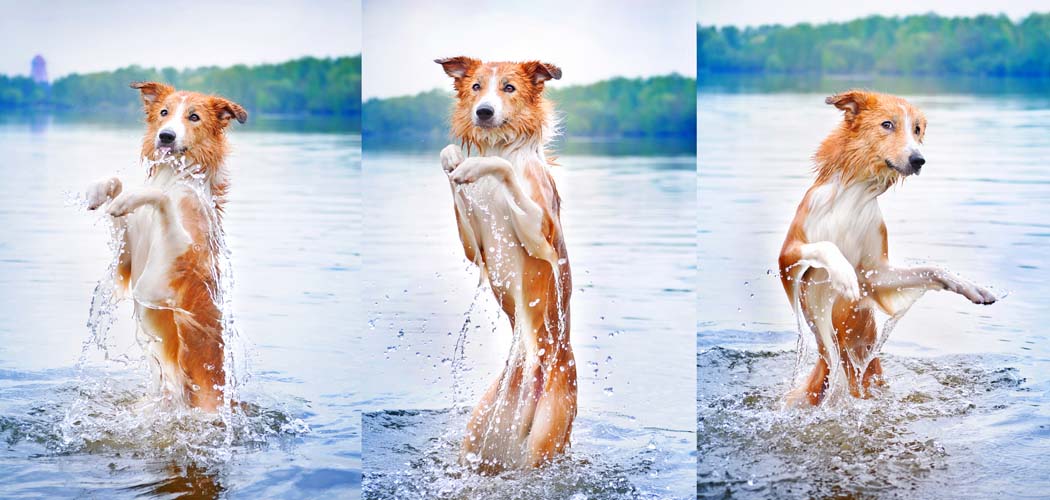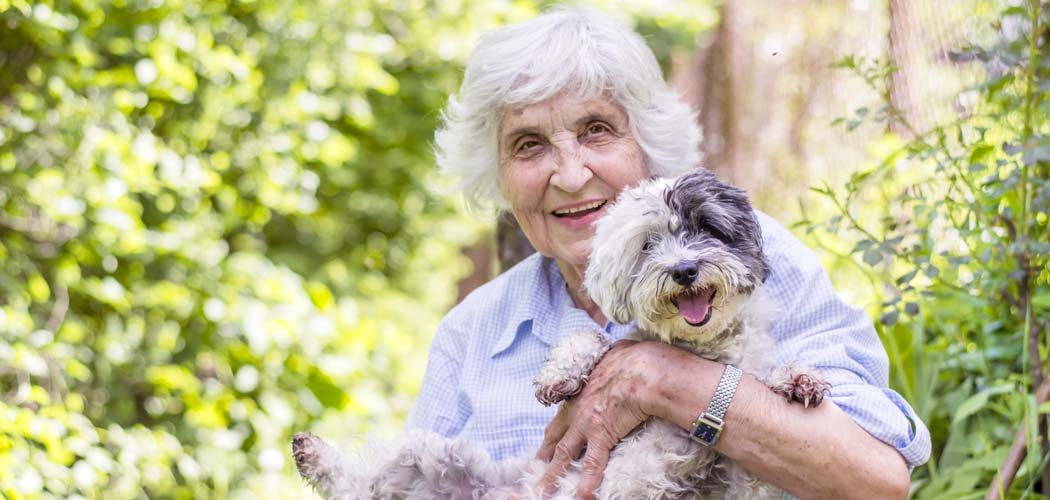Table of Contents
The personal experiences of at least 50 million dog devotees combined with the high science of a handful of rat-, ape- and dog-tickling animal behaviorists have irrefutably proven that dogs have a sense of humor.
I'm being serious. We've seen authoritative sources write about this.
Humor—a triad of being amusing and amused, state of mind, and being accommodating—may better define the quintessence of dog-soul-dom than any other core characteristic.
Like their people, their humor is usually irrepressible and always demonstrative.
RELATED: 20 Most Fascinating Scientific Studies on Dogs
How Dogs Communicate Their Sense of Humor
1 Dogs Do Indeed Laugh. In A Way.
Head up, toothy broad-mouth, sparkling eyes, and a chuffing pant typify canine crack-up.
Face shape notwithstanding, the elemental physical expression of laughter may coincide with a size-matters vocalization, a Catahoula chuckle, GBGV giggle, hound howl, Rottie roar, Schipperke snicker, or a Weimaraner whoop.
A dog-respiration study published in Stanford University's Science News describes dog laughter as “a broader-frequency exhalation” than panting.
A 2005 Michigan State University study further reported that recordings of dog laughter played back in stressful animal shelter environments, calmed anxious dogs, and increased their confidence to interact with people and other shelter residents.
That's the scientific explanation. The rest of us just know it when we hear it, and it has the same happy-calming effect on us.
2 Dogs LOVE to Smile.
Dogs show a lot of teeth when they smile. A dog grin isolated from other body language might even look threatening.
However, like their best bi-pedal friends, a happy Canis lupus familiaris will demonstrate soft ears and eyes, sometimes almost closed, and often accompany a toothy grin with a play bow and joyous tail wag.
American Staffordshire Terriers, better known as Pit Bulls, literally grin from ear to ear—big smiles that could be intimidating except for the accompanying “I'm happy, and I like you” relaxed ears and squinty eyes.
Puppies of all breeds tend to be beamers, exhibiting smiles that are unfiltered and spontaneous.
A University of Wisconsin Stevens Point (UWSP)-compiled dog behavior article cites various studies and states that the foundational dog smile is a “relaxed, open-mouthed facial expression.”
The article further explains that the canine facial expression of smiling is often demonstrated in response to human expressions of humor and happiness, a phenomenon called laugh contagion, and frequently accompanies a play-date invitation to another dog or person.
Whatever the motivation, the smile of a dog can start an almost perpetual give-and-take of human-to-hound-dog humor.
3 Dogs Wag Their Tails.
The word wag is a synonym for clown, comedian, humorist, jester, jokester, prankster, cut up, and life of the party.
Waggery, the physical expression of being the life of the party, is a man's-best-friend condition of comedic communication that, while a dog can hold its tail still, is irrepressible when the dog is amused or being amusing.
Wagging is so fundamentally tied to dog clowning and cutting up that dogs with short tails compensate for the lack of big sweeping gestures by wagging their hindquarters or entire bodies.
Northwestern University's Helix newsletter publishers put a scandal about government funding for the study of duck genitals behind them by taking a closer look at dog emotions and expressions thereof.
Evidently, canine right-brained activities are rational, and left-brain activities are emotional.
While neuroscientifically oversimplified, it appears that, as the right side tells the left side to wag the tail, humor is a rational and conscious choice for dogs, and expressions of hilarity through tail-wagging are deliberate, resulting in comedically calculating Collies.
4 Dogs Play and Frolic.
When something big and noble like a Great Dane or Scottish Dearhound bounds, smiling and laughing, towards a person or another dog, bows, throws itself onto its back and scootches the grass beneath it, it is doing the human equivalent of rolling in the isles with delight.
Adult dogs have what almost appears to be a puppy trigger when they are really tickled; they become bow-wowed by buffoonery and give in to unfettered puppyish shenanigans.
5 Dogs ALWAYS Intrude.
While unsightly butt-sniffing rituals are widely accepted at the dog park among, well, dogs… They aren't usually well received when they cross from the Canis species to Homo sapiens.
People typically assume that being poked in the privates by dog nose is either a check-out or scent-judgment move. Sometimes they are right, but often the dog likes the person, and thinks giving him or her a dog-society-friendly jab fore or aft is sort of a “hah, I punked you” move.
Cold wet nose on bare skin activities when people share their bed with their dog(s) comes from the same motivation.
Suffice it to say that there hasn't been a great deal of scientific study of dog noses inappropriately invading, meddling with, insinuating into, pushing in, or otherwise pestering privates—that would be subject to duck genital study scandal scrutiny.
However, The Daily Puppy reports that nose jabs are a dog's way of getting their person's attention, and if they are a bit alarming, comedy ensues, hence the naughty nudging Newfoundland.
6 They Play Keep-away and Hide.
While both keep-away and hiding are usual doggy games, they differ enough from frolic to deserve their own category and classification in the dog humor lexicon.
It's fair enough to say that these games are based on the dog amusing itself at the expense of its owner's frustration. A Samoyed savoring its prize of a dead skunk is sure to put its person in a frenzy of “drop its” and “oh, gross!” That's funny.
A St. Bernard standing perfectly still behind a bush while its sainted person tries to get it in for the night… frustrating. And funny!
Mischief, pranking, and funny business are inherent in keep-away and hide-away. All Dogs Academy indicates that dog owners often inadvertently teach their best buddies to play these games, thus owning their own frustrations.
For example, an otherwise obedient Otterhound may be willful about some things or think its human hound is going to take something from it, make it do something it doesn't want to, and even get a bit testy. These are all good reasons to stay clear. Oh, and it's fun-y.
7 Dogs Swipe Stuff.
Terrier thievery, like keep-away and hide-away, are fun enough for the dog without any human reaction. Watching the human react—searching, swearing— now, that's good sport! When a Poodle pilfers a pillow, or a French Bulldog filches food, the primary motivation may be to play or eat something fantastic.
The secondary motivation is to have a great time getting away with it. Most dogs have a fake guilty expression that accompanies these activities. Inside, they are quite amused with themselves.
A scientific perspective might be that dogs cop, lift, pinch, or otherwise make away with cool things that aren't theirs because, well, they're yours.
Vetstreet's perspective is that they are amused by things their owner has when they turn them into a toy, and that the reaction to the discovery of the person's chewed belongings creates another funny game.
The food theft? Well, food smells even better to them than it does to us, so why not? And if the owner chases the steak-stealing shepherd? Funny!
8 Dogs Talk to Us. Or Try to.
Vocalization, like laughter, is diverse in its nature, dog-to-dog. Some breeds are exceptionally chatty about what's humorous to them.
Hounds of almost any hunting discipline are often seen kenneled in the backs of trucks on the way to a day in the field.
This is usually the case because hounds are so effusively delighted by the prospect they howl and bay with laughter and joy loudly. Other breeds chatter, jabber, burble, babble, and yap. Coincidently, all synonyms for enthusiastic, happy talking.
A Brigham Young University study concluded that human babies actually understand canine vocalizations. Essentially, dogs can converse with and communicate emotion to children less than six months old.
It is surmised that dogs are funny and say funny things to babies, and that is why babies so frequently get the giggles when hanging out with a man's best friend.
Thankfully, while people lose the ability to understand the funny things that the dogs are saying, they maintain a great capacity for finding humor in how they say it.
9 Yes, Dogs Also Dance.
Joy, amusement, delight, glee, and merriment all inspire some dogs to stand up on their back legs and shake their booties.
It's not like they line dance or paso doble, but they throw their front paws up, bounce about on their back ones, and do an occasional shimmy.
Small dogs, especially the wiry ones, seem to be the most dance prone, and when their people get a kick out of it, they usually light up, grin and put more energy into it.
There's nothing like the exchange of humor between man and beast when the Basenji boogies.
Technically, Psychology Today is accurate in saying that dogs don't dance because editorially, they use this definition of dancing: “bodies in synchrony with an external musical beat.”
They do go on to say, though, that some birds may be able to dance; early investigation indicates that these are birds that can also learn to talk.
So, maybe, when the dog was talking, telling the baby funny jokes, it was also teaching it how to dance, and its ability to do so is so elevated that music isn't required, just joy and laughter.
10 Dogs Make Their Hoomans Laugh.
Everything that dogs do to indulge their humor and happiness is humorous to humans. Well, almost everything… The hiding and stealing can be wearisome at times.
Beyond that, however, dogs do make their humans embrace humor. K-9s, whether purebreds or mongrels are extremely sensitive to the emotions of the people they love. When their human is sad or angry, most dogs will do something to try and add humor and cheer to the situation.
National Public Radio (NPR) published information from a series of studies showing that dogs process emotion the same way people do and that they read emotion in human voices.
There's a place in the back of their brain and ours, near the ears, that tells us the feelings connected with tone of voice. Our best friends want to change our tone from happy to sad.
It's a big responsibility for a dog to be its person's chief morale officer. That may be why adventurer and writer Edward Abbey said: “When a man's best friend is his dog, that dog has a problem.”
Humor… It's a dog's life. And ours.
 Humor and health are inexorably linked for people and their dogs.
Humor and health are inexorably linked for people and their dogs.
The University of Massachusetts (Dartmouth)‘s study of the health benefits of humor—including reduced stress and blood pressure, diminished heart disease, improved immune system, and better brainpower—supports what dogs know instinctively: funny is fun and healthy.
The UWSP report summarizes our bonds with dogs thusly: “There is a power in our relationships with dogs in which we share feelings that are reserved only for our closest family members.” Our fundamental goal for our families and our beloved furry best friends is to make them happy.
Beyond food and shelter, sharing humor is our best tool for achieving happiness. Laugh with a dog when a dog laughs and give it a life full of fun and hilarity. It will return the favor, and the perpetual exchange of good will and happiness will keep us well.
READ NEXT: Does My Dog Love Me? Myths and Facts About Dog Emotions


